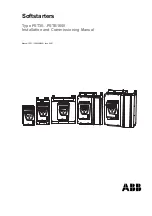
9
PORT PROGRAMMING
Each of the two serial ports can be independently programmed
with individual port parameters (baud rate, data bits, stop bits and
parity). The maximum baud rate is 115,200. Both ports default to
the factory settings of 115,200 baud, 8 data bits, 1 stop bit and
NO PARITY. Changing the parameters to match those of the
controlled device is straightforward in the two port windows.
Parity is input as ‘NONE’, ‘ODD’ or ‘EVEN’.
On the handheld transmitter, keys 5 and 6 each send a unique
serial data string to Port 1, while buttons 7 and 8 each send a
unique string to Port 2. The desired strings are set using the text
boxes appropriately labeled in the port windows.
A simple text string should be typed into the text box. Each
string can be up to a maximum of 50 characters. Most serial
control codes contain some combination of simple ASCII text and
control codes. Control codes are input as integer data (base 10)
contained in brackets []. For example, to start a data string with
the STX command (integer 1), begin the string with ‘[1]’. If the
next data in the string is an integer, perhaps a switcher address,
again enter it in brackets ‘[14]’. Any data not enclosed in
brackets is taken literally. “[1]123[3]” is sent as integer 1 (STX)
followed by ASCII characters ‘1’ ‘2’ ‘3’, followed by integer 3
(ETX). The carriage return and line feed characters are input as
‘[r]’ and ‘[n]’ respectively. An integer larger than 255 ([255]) will
produce an error since no single character value can be larger
than that. Because serial devices operate on byte-by-byte
transmission, you should never encounter the need to input a
value larger than 255.
The data string associated with each key is stored in the
SureShot™ Controller exactly as it is entered in the GUI’s text































